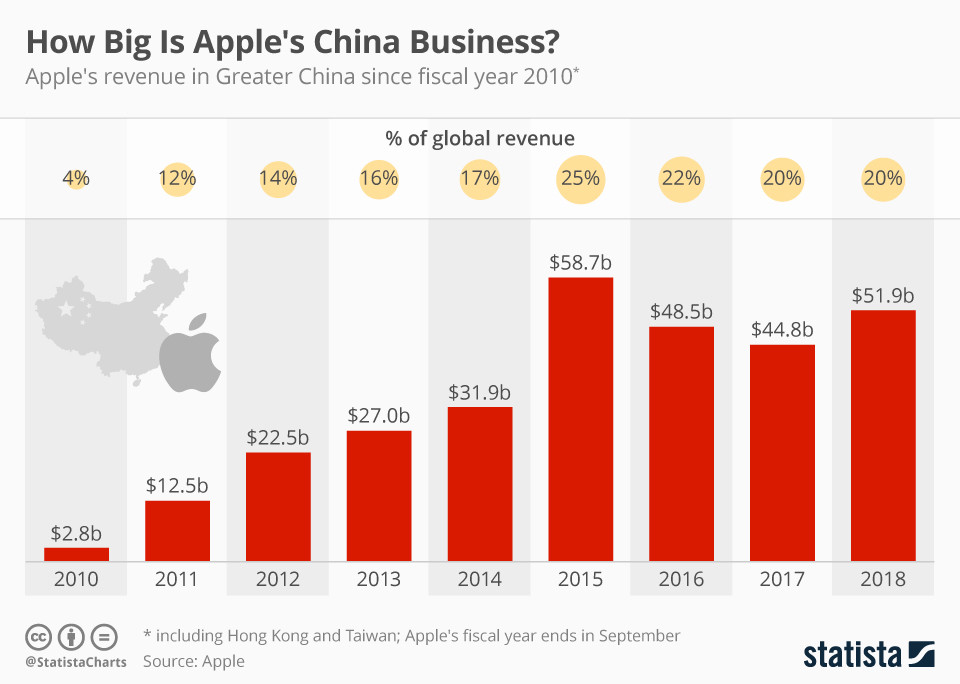Having gone from major growth driver to weak spot before, Apple's Greater China business has once again proven to be the proverbial banana skin on the company's road to another record-breaking holiday quarter.
When Apple CEO Tim Cook announced a downward revision of the company's revenue guidance for the December quarter last week, he attributed “most of our revenue shortfall to our guidance, and over 100 percent of our year-over-year worldwide revenue decline” to iPhone , Mac and iPad sales across Greater China. In his statement, Cook blames China's recent economic slowdown and rising trade tensions for his company's lackluster performance in the country but the high prices of Apple's latest flagship iPhone models may also have played a part.
As the following chart shows, Apple's China business has grown nearly twentyfold since the company entered the Chinese phone market in 2010. In Apple's fiscal year 2018 (which ended September 27), Greater China accounted for 20 percent of the company's revenue, virtually unchanged compared to the year before.
After going from a key growth driver to a weak point, Apple's China business has once again proven to be the proverbial banana peel on the company's path to another record-breaking holiday season.
announced a downward correction of the company's sales forecast for the December Quartal last week , he “led to the sales of iPhone, Mac and iPad in all of China in comparison to the previous year”. In his explanation, Cook China's recent economic weakening and rising trade voltages are responsible for the weak performance of his company in the country, but also the high prices of the latest Apple iPhone flagships could have played a role.
As the chart below shows, Apple's China business has grown nearly 20-fold since the company entered the Chinese phone market in 2010. In Apple's 2018 fiscal year (ended September 27), China contributed 20 percent of the company's revenue, remaining almost unchanged from the previous year.


